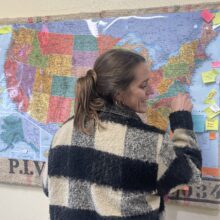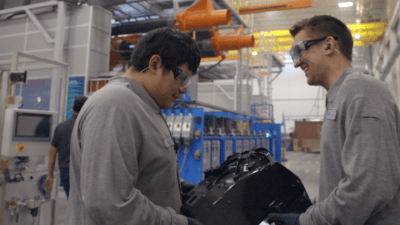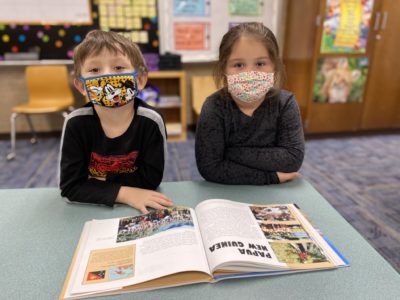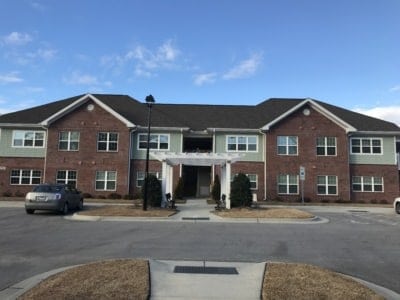Mountain Heritage High School (MHHS) — the only public high school in Yancey County — sits atop a hill. Around the softball field, away from the main office, at the back of the school grounds is the Michael D. Orr Construction Training Facility.
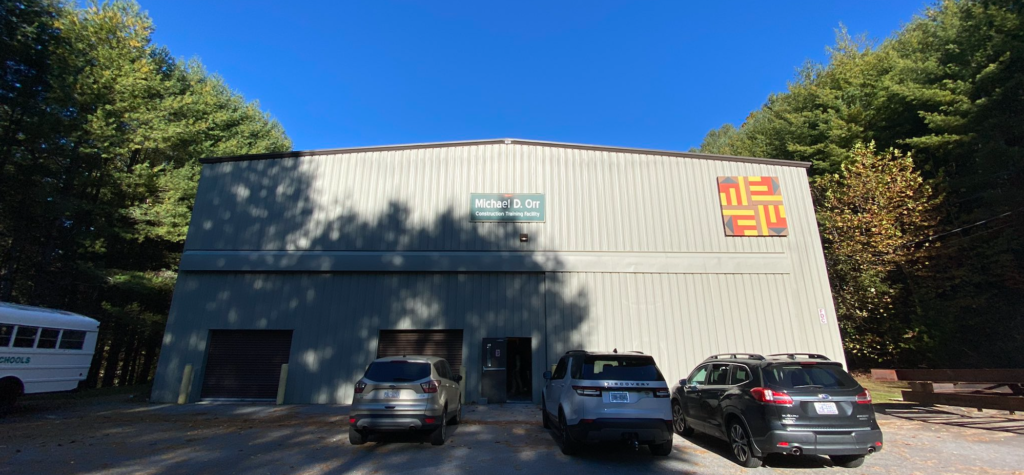

In 2003, MHHS construction technology teacher Michael Orr wanted to take his students to a Habitat for Humanity job site. The idea was pragmatic: Students could use the skills taught in his class for community benefit and get experience building a home.
But the region’s expansive and mountainous landscape, travel logistics, student schedules, and more made the would-be experience difficult to accommodate. Orr contacted Jim Swaim, building chair for Mitchell-Yancey Habitat For Humanity, with the idea.
Together, and with more community members in tow, they began a collaboration that has now reached about 1,000 Yancey County students.
Inside the construction training facility
During Carpentry I class, instructor Jeremy Dotts stood in front of a two-week-old modular home frame. Students have just begun construction. Most recently, students worked on a home which was removed on a trailer and delivered to a former MHHS teacher who had lost their house in a fire.
Students are working on exterior walls, clustered in groups focusing on different aspects of the build. On average, Dotts said, the class can turn a house in about 15 weeks. This is weather-dependent, as the district tends to get some snow days in the winter. His hope for this home is to get it out the door by February or March.
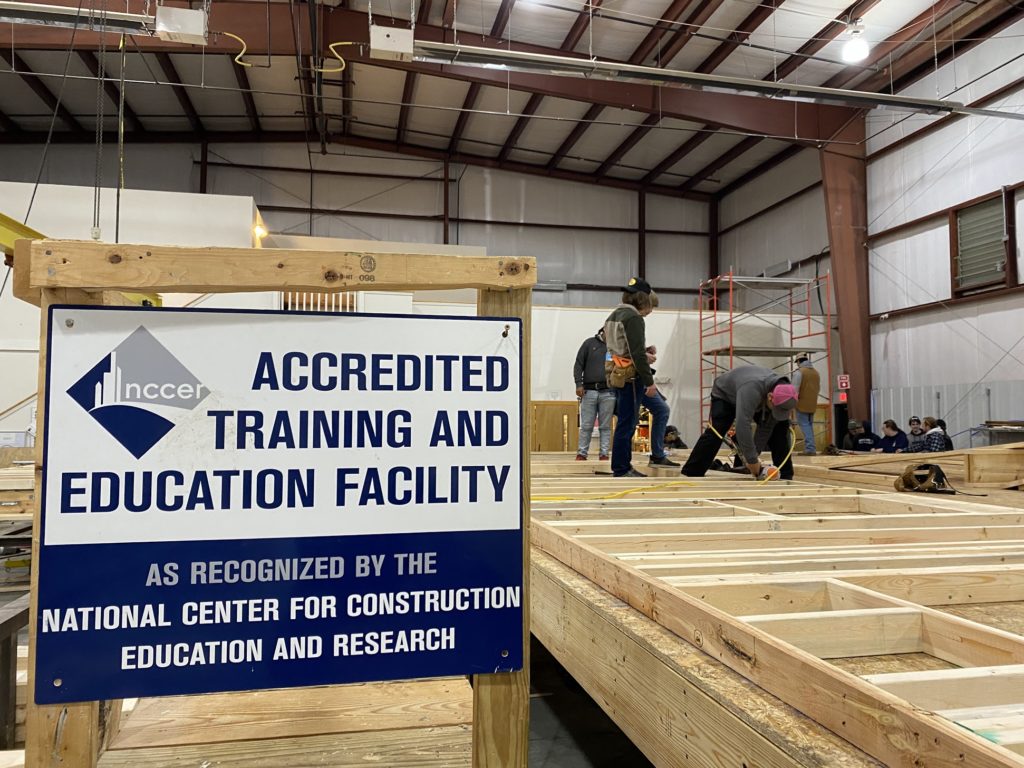

In Dotts’ class, students learn to build the shell of a home. This means putting in a floor system, wall system, and installing windows and doors. After that, the modular home is transported to the final construction site and put in the hands of a professional contractor.


Photo courtesy of Cynthia Deyton, Yancey County Schools. 

Photo courtesy of Cynthia Deyton, Yancey County Schools.
At MHHS, Carpentry I is offered in the the fall and Carpentry II in the spring. Throughout the class, students receive about six credits they can transfer to a community college. MHHS has an agreement with Mayland Community College, so carpentry students receive credits for high school and community college at the same time. Mayland also shares the facility for a masonry class that Dotts teaches.
The class works with local contractors and businesses, which offers a mutually beneficial opportunity for students and companies. At the end of 2020 school year, Dotts said he “had almost half the class hired before they even graduated.”
He has seen his past students working in HVAC, becoming plumbers, and project managers. Through the class, they may find their place in the construction industry, though it doesn’t have to be in carpentry.
“Our program has evolved some over the years because as we’ve grown … changes have happened. We’ve evolved to really focus on what meets the needs of our students for teaching our class,” said Cynthia Deyton, Career and Technical Education (CTE) director at Yancey County Schools.
One of those early evolutions was creating a nonprofit organization. The new nonprofit arm, named “Pillars,” was formed to receive donations to help fund the facility and equipment for students to use once completed. Through Pillars, the program was also able to work with an architect who designed four floor plans that all modular homes the students construct are based off.
Those receiving the home choose the floor plan they want and can work with Dotts and students to make alterations. This gives students experience in communicating with a customer, and in figuring out how to tinker with a design.
“There’s always owners who want to change it a little bit, which is good,” said Deyton.
Upcoming projects
Modular homes are not the only thing MHHS carpentry students build. The class participates in local community service projects. One of the most exciting upcoming collaborations is with Appalachian State University, to build a new farmers market for the town.
Appalachian State students have come up with the design. MHHS students will help execute the build. The college students and professors have already come down and talked with the carpentry class. MHHS students got to meet college students who were about to graduate, ask questions about the university’s design program, and engage with professors.
Deyton loves the idea that MHHS students can see structures in the county they had a hand in bringing into existence.
“When you think about it, if you’re in high school, and you can drive by and see something and say ‘I helped build that.’ That’s an awesome accomplishment for a student,” she said.
